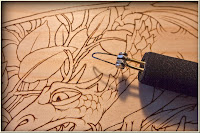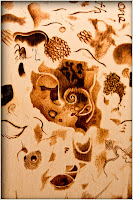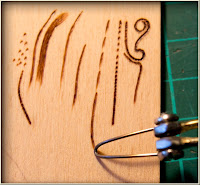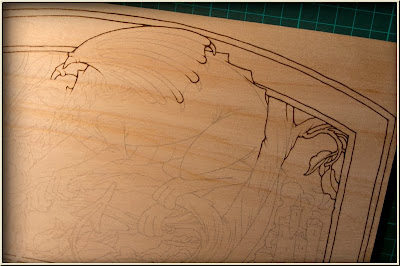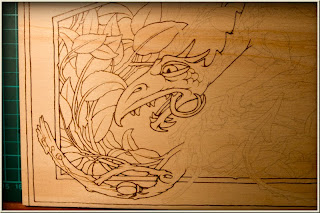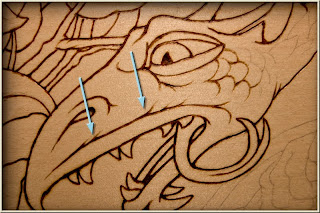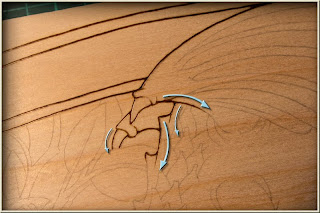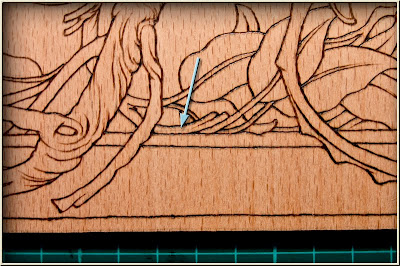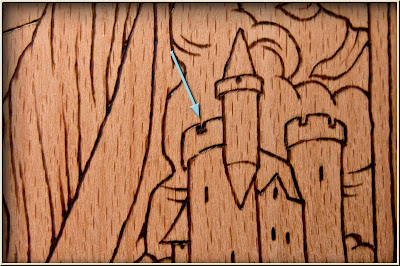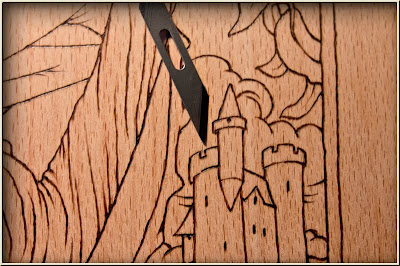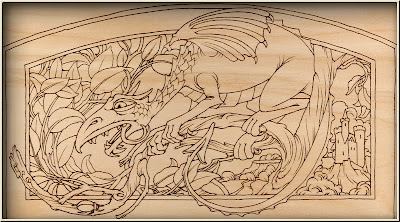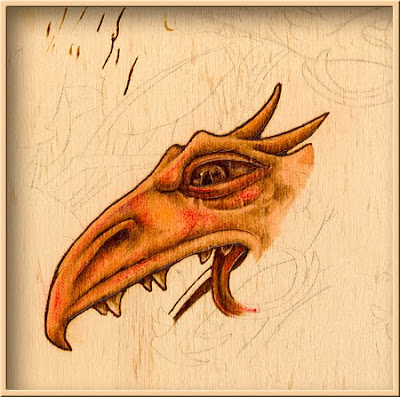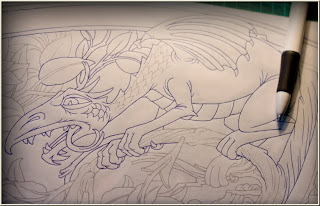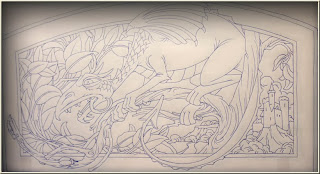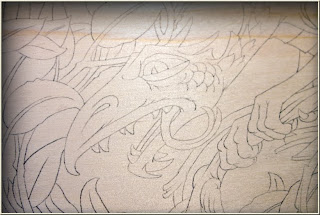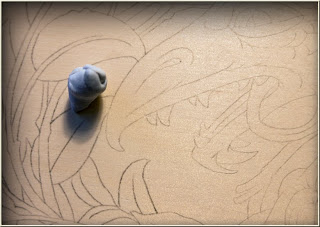Various circumstances, mostly not bad ones, have prevented me from keeping up to date with this tutorial and I do apologise for that to all who are following along. The main content of this blog and the pattern for 'young Dragon hiding' is to be published as a step by step magazine article by Fox Publishing in their next 'Pyrography Special Issue', under the banner of 'Scroll Saw Magazine'.
This pyrography magazine had its inaugural issue published earlier this year. Consequent to this project being published I need to have the project completed, the article written and the accompanying photos prepared and annotated by the end of this month. This has meant that I had to start the project again in order to have photos of the process that are suitable for magazine production.
As explained earlier, this project has been experimental from the beginning and I have been feeling my way with it. In my first attempt at re-starting the project I changed some aspects of it. The changes did not work out and I have had to start yet again with a return to the paint materials I'd suggested at the beginning.
I have also now set up a more purpose made mini photo studio for taking the step by step photos and this should help with things in the future.
The spoon is carved from an extremely hard timber called saffron heart. Hard to carve but a beautiful amber colour and it takes a good finish. The spoon is nine inches long and features a celtic style dragon between the chain link and the bowl.
Before getting properly back on track with this blog I will need to complete the material for the magazine article. In the meantime I will post some of the photos I have of current progress with this project. I will have to do this with little or no instructional text at this point but just hope you can make some sense of the photos as they stand. I will a bit later re-jig this whole tutorial into a more logical form.
I have also made some changes to the original pattern in that I have included scales on the dragon body. If anyone wants to have the new pattern with scales right away, then you can email me and I will gladly send you an updated pattern. Otherwise I will be placing the new pattern on my web site sometime next month.
My manner of working on this project has been more intuitive than methodical in nature. That is, I have tended to work on one section through to near completion, then move on to another area of the picture altogether and then perhaps to re-visit another area that has been already almost finished.
Just briefly for those following, After the water colour paint has been applied and it's thoroughly dry, I have then used the pyrography tip with the flat portion downwards to firstly burnish or polish the area I'm going to work on. This is done with a very low heat, low enough so that little or no tone is imparted to the work, just a 'glazed' polish leaving a surface so smooth that the pyrography tool slips smoothly over the surface.
Keep the tip of the tool polished and polish the area you'll be working on. With the heat turned up just a little, just enough to gently tone the timber, start shading your work in a combination of short gliding strokes and sometimes little circles. You will have to acquire a feel for this as you go and as you practice. Think of it as painting the tone on in a layering process achieving darker tones by repeated passes and by lingering slightly in some areas. Practice the technique on your scrap piece often and you will gradually gain confidence. I will explain the technique I have used more fully when I write this Blog up properly later.
The other technique is the use of coloured pencils to add the main colour to your work. Experiment with different colours some will work better than others and I don't just mean the hue involved but their handling characteristics on the pyrographed timber surface. the trick is, like using a very low heat on the pyrography tool, use very little pressure and lay down the pencil pigment without impressing the timber at all. Then after applying the coloured pencil polish the area with a tissue until the colour appears blended with the timber. You can lay colour over colour this way and finally polish the whole area with the very low heated tip of the pyrography tool.
This is a brief run down of the technique I have used. I will deal with the finer points later and in the meantime will add progress photos of the project as I go.






























